TECH TUESDAY: From DAS to the slotted cape – the top five technical innovations of 2020

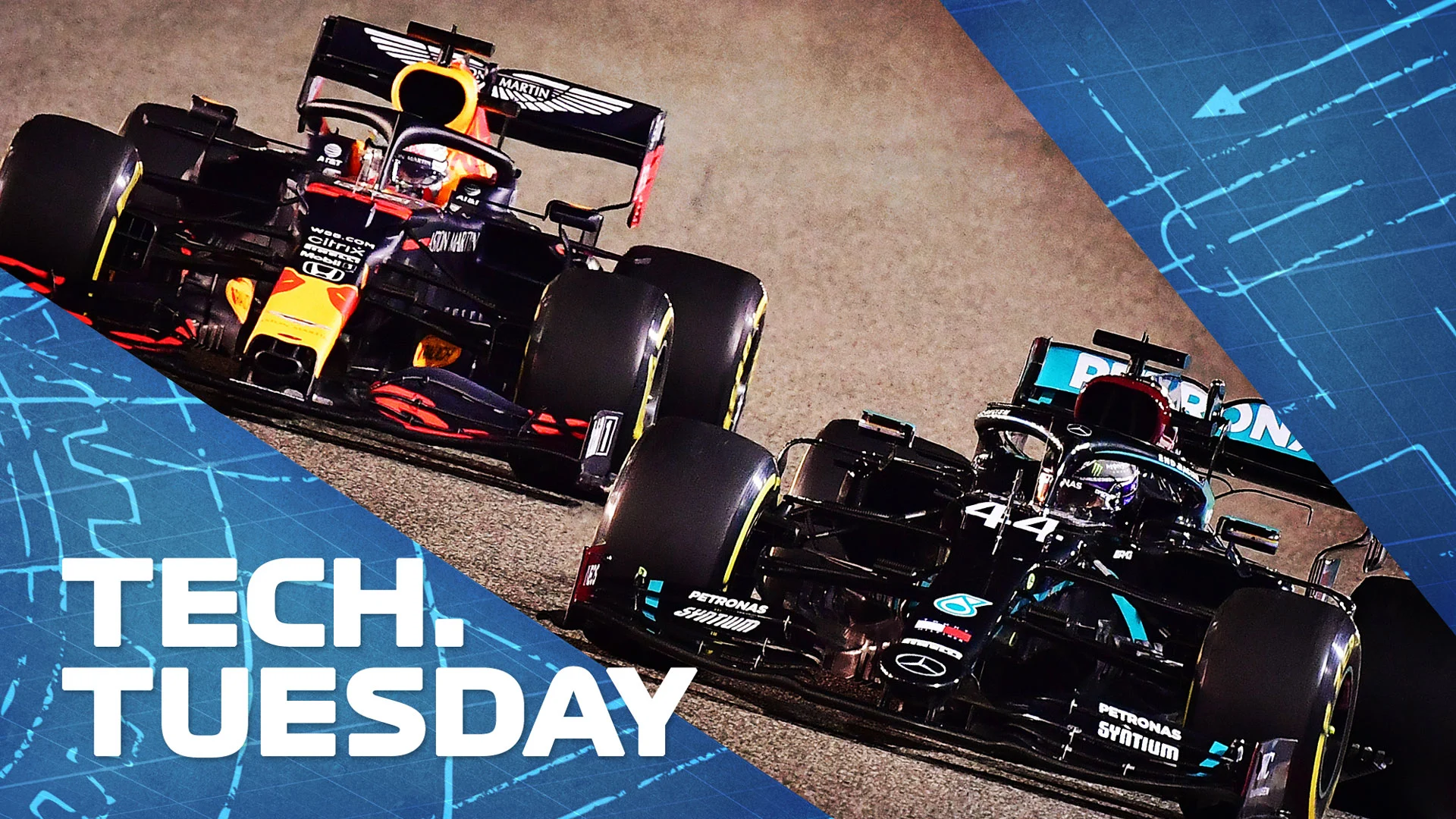
The 2020 Formula 1 season has finally drawn to a close, and the teams' engineers and designers are now working hard back at their bases to try to come up with the most ingenious solutions they can as their relentless drive to make their cars faster and faster continues. But before we move on to next year, it's time to take a look at the top five technical innovations of 2020, as nominated by Mark Hughes, with technical drawings from Giorgio Piola.
1. Mercedes' rear suspension
This was a thing of some engineering beauty, driven as ever by aerodynamics and the chase of more downforce but making extreme structural demands. The Mercedes design team threw themselves into that challenge, even though the risk of failure – of not being able to get it through the rear impact crash test – was very real.
In order to free up much more space between the rear tyres and the diffuser walls - and therefore to create a greater volume of airflow with which to interact with the underfloor flow exiting the diffuser – the lower leg of the rear wishbone was mounted directly into the crash structure, rather than in its conventional place of the gearbox casing.
READ MORE: Why DAS is only the second most impressive innovation on the Mercedes W11
This allowed the whole of the rear suspension to be swept backwards, creating that free airflow space in front of it, which in inducing the underfloor to speed up created greater downforce.
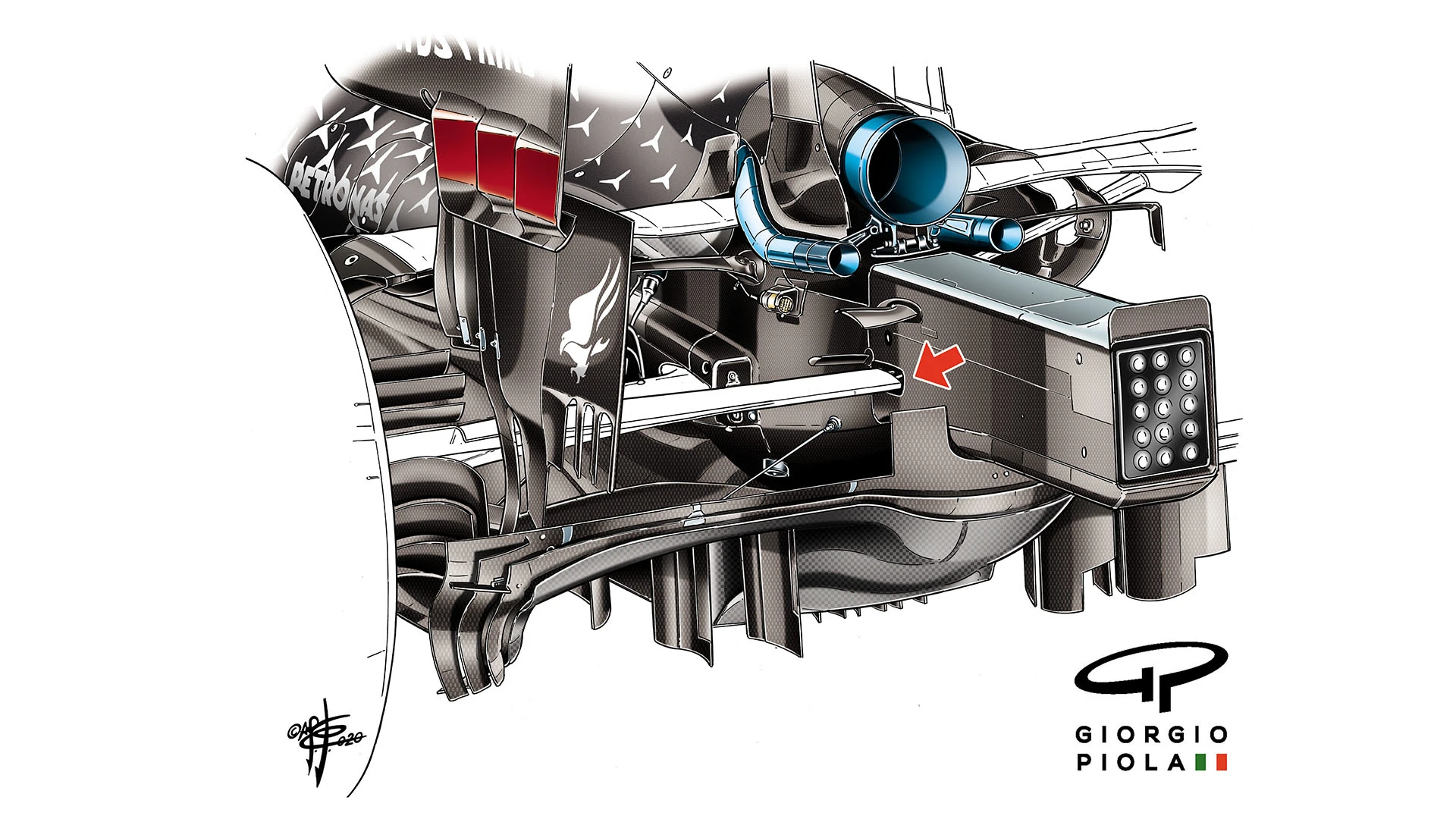
It moved the car’s centre of aerodynamic pressure back and in this way ensured it would stick, even when Lewis Hamilton had it set up to give a very aggressive slow corner turn-in.
This was a trait he’d been pushing the team towards for years – and the new rear suspension allowed it to be delivered. In terms of raw performance, it was by far the most impactful new technical feature of the year.
2. Red Bull's front end
Red Bull reached the conclusion last year that its philosophy of a wide nose with J-vanes further back to turn the vortice-enhanced airflow to the barge boards had run its natural course. Since 2017, Mercedes had combined a very slim nose with the under-nose cape to do this job – with the advantage that the turning process could begin much earlier.
The earlier and more gradual the turn, the more robust the flow tends to be as there is less risk of detachment. There are complications – the slim nose induces a narrower gap between the vortices and therefore more scope for them to interfere with each other – but the narrow nose/cape combination did seem to offer more potential.
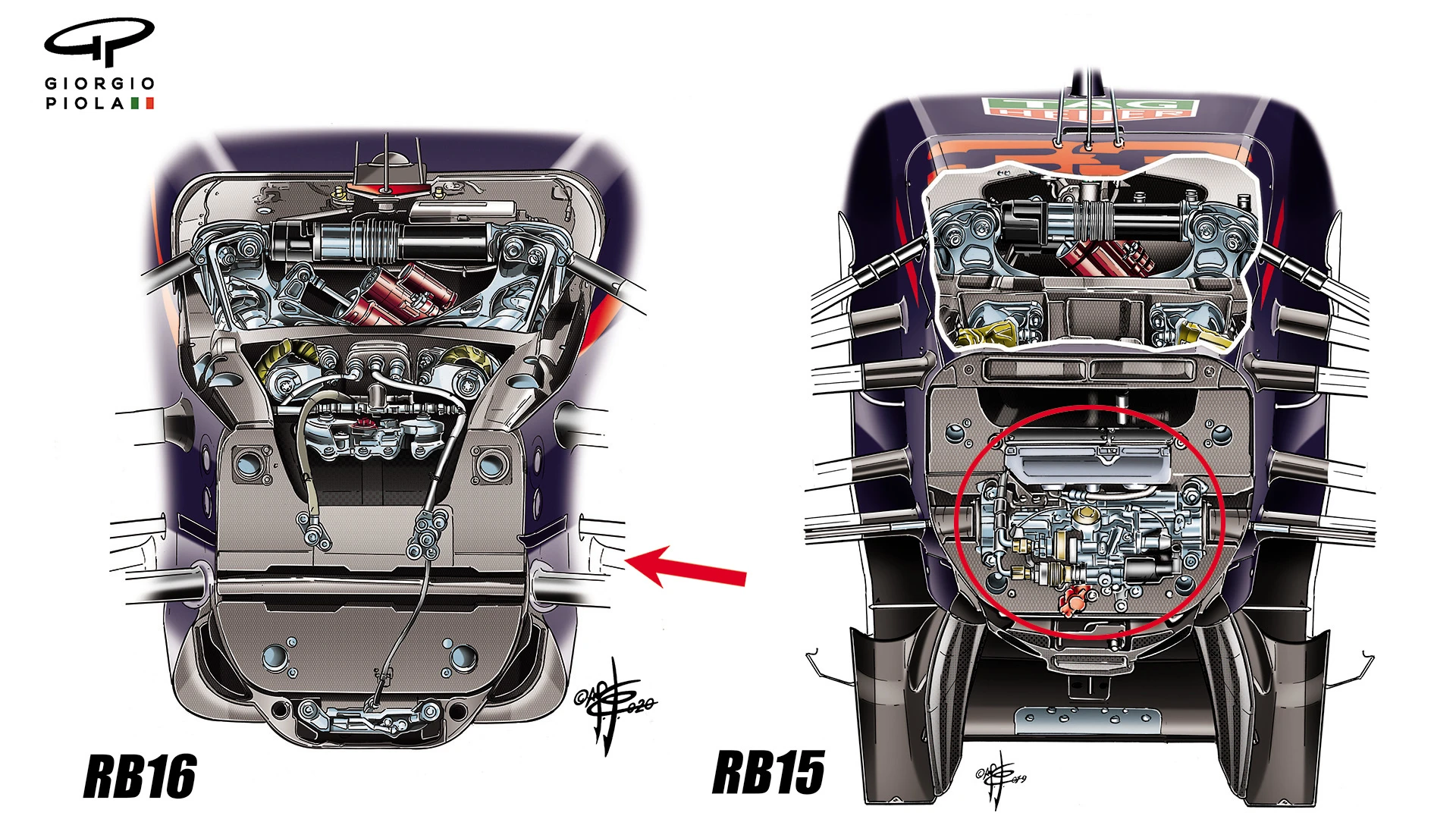
So Red Bull made the switch. But in doing so, it took it to extremes. To make the nose as narrow as it wished, it separated the steering gear and reservoirs from the suspension internals, moving them way back behind the suspension in a separate compartment (as you can see in the image above). It was a big engineering job.
Externally, the front suspension continued to be a multi-link like last year, but this time it was done with the lower wishbone rather than the upper, lowering the centre of gravity height. With two separate attachment points into the wheel hub (rather than a shared attachment, like everyone else) for that wishbone, there would be less reduction of the tyre contact patch as the wheels were steered.
3. The DAS system
Dual axis steering didn’t bring Mercedes as much a benefit as it was anticipating. Because of its ban from 2021, it wasn’t developed any further than its initial design, which was on the W11 from the off.
Onboard footage in winter testing showed that the steering column could be moved back and forwards between two different settings – and that these altered the toe angle of the front wheels.
READ MORE: DAS explained – what we know about Mercedes' trick new steering system
In this way more heat could be induced into the tyres prior to a qualifying lap or a restart behind the safety car. It was useful in this, but the original vision was that it would be further developed to give infinite driver adjustment between the two points as an aid to cornering.
A brilliantly ingenious innovation, but ultimately not all that significant in performance terms.
4. Red Bull's slotted cape
Red Bull suffered some difficulty giving the RB16 adequate handling consistency at low speeds. As the vortices spilled off from the cape towards the barge boards (which then accelerate the air further before feeding it to the underfloor), there was some difficulty keeping them attached at low speeds.
The benefit of the cape was therefore sometimes being lost – because once those vortices became detached, suddenly the underfloor would be starved of the barge boards’ contribution to its airflow.
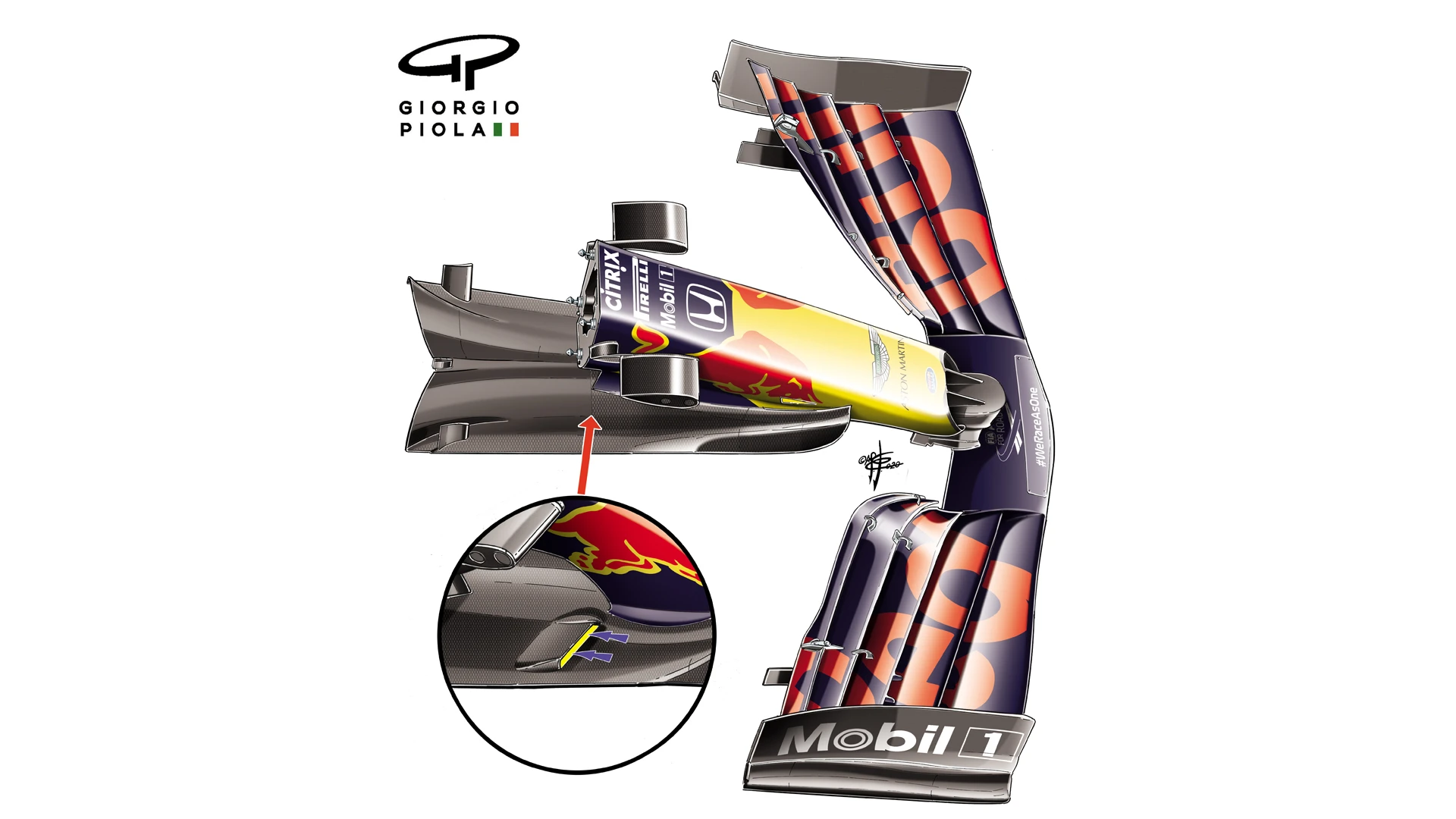
The solution was not purist, but effective. Small slots were cut into the cape, one either side of the nose, feeding air direct to the underfloor at all times. This would deprive the cape of some of its power in turning the flow towards the barge boards, but would ensure the flow feeding into the underfloor was more consistent and less stall-prone.
The RB16 did seem to make significant progress after these slots were introduced in Istanbul.
5. Red Bull's front wing endplate slots
The detailed aerodynamic sophistication of the Red Bull was immense. This could be observed by the single slot beneath each of the front wing endplates. It’s not known (outside of the team) how or if these connected up to the tiny holes at the trailing edge of the endplate (see the details in the gallery below). If so, the implication of the placement of the smaller holes to the bigger slot is that it was used to scavenge air from ahead of the front tyre, out-washing it around the tyre.
READ MORE: The RB16 upgrades that allowed Red Bull to close the gap to Mercedes
Because air will travel from high pressure towards low, it implied that this scavenged flow would be travelling in the opposite direction of travel to the car within the internals of the endplate.
Next Up
Related Articles
.webp) What F1 drivers have been up to over the festive holidays
What F1 drivers have been up to over the festive holidays F1 drivers who bounced back after dropping off the grid
F1 drivers who bounced back after dropping off the grid Norris ‘would love’ to battle with Hamilton in 2026
Norris ‘would love’ to battle with Hamilton in 2026.webp) How F1 drivers recharge during the winter break
How F1 drivers recharge during the winter break Verstappen on what he would never do as an F1 team boss
Verstappen on what he would never do as an F1 team boss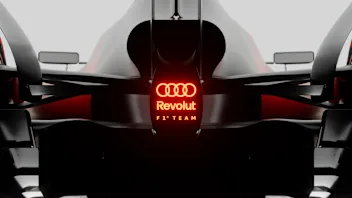 Audi complete first fire-up of 2026 F1 car
Audi complete first fire-up of 2026 F1 car